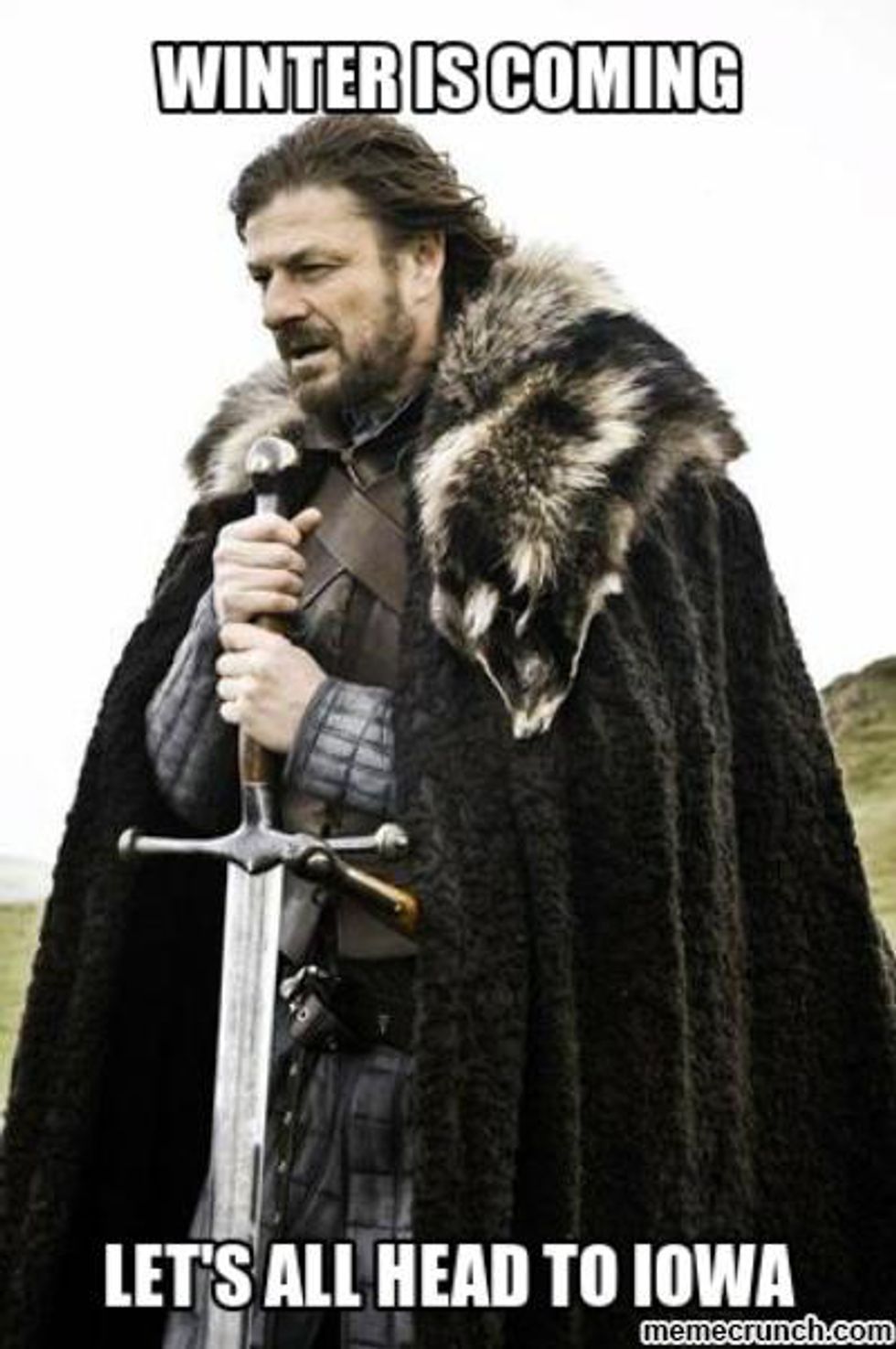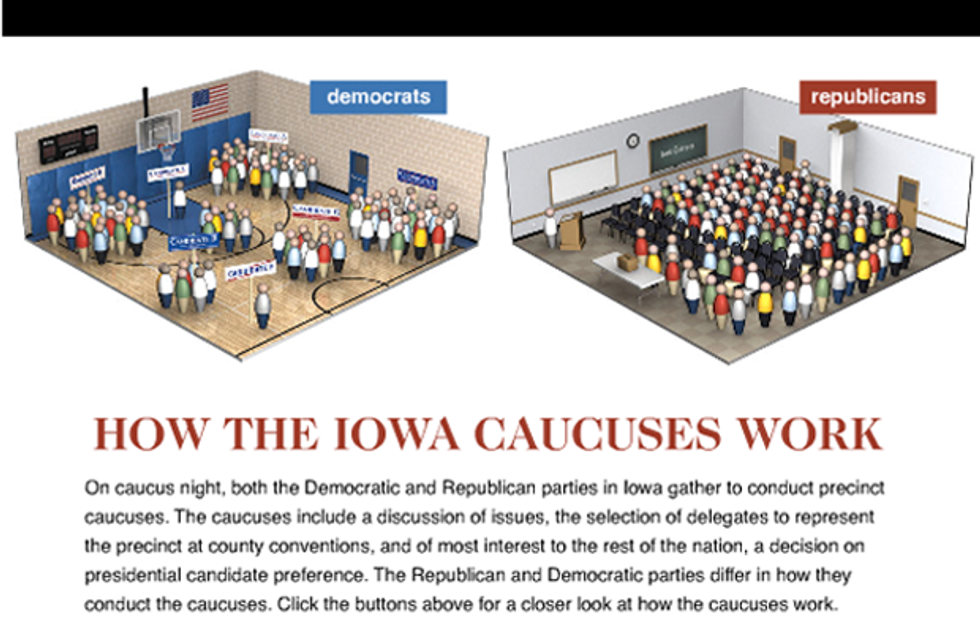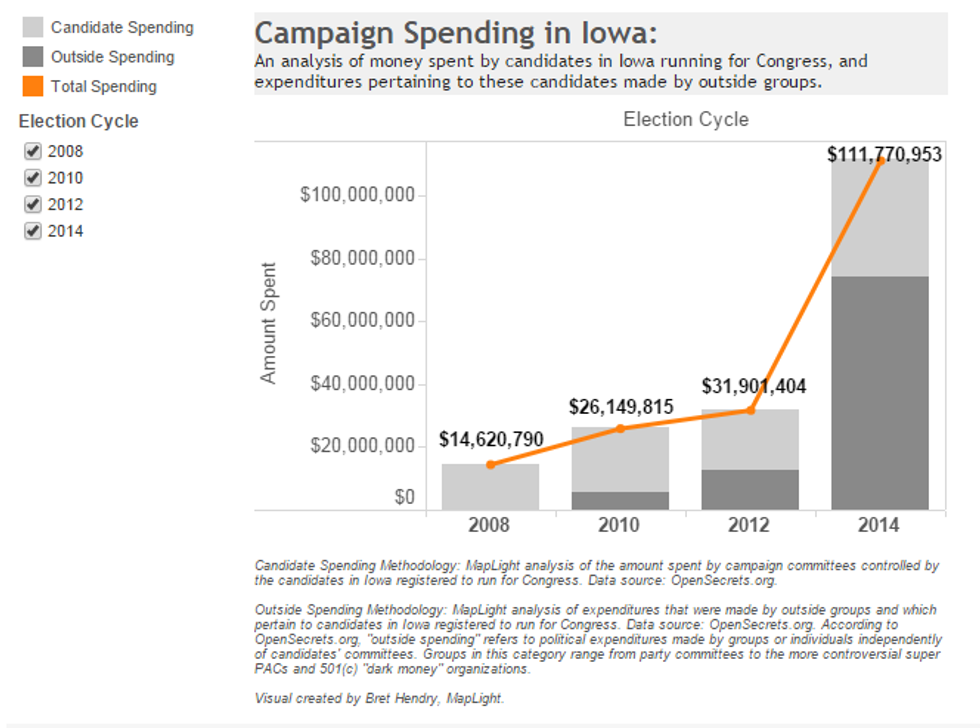"First in the Nation" is a title that many Iowans are extremely proud off. The Iowa caucuses have placed an otherwise quiet state on the political map. Not only do the Iowa caucuses benefit the presidential hopefuls by giving them an opportunity to jump start their campaigns, but the caucuses help the local economy and encourage political engagement.
The first Iowa Caucus occurred in January of 1972 and had a record turnout. The caucus energized the Democratic party for the election cycle and put the spotlight on Iowa when it came to politics. Soon the Republican party followed suit and began caucusing in Iowa as well. Since then, candidates have spent an insane amount of time and money wooing Iowa voters.
Recommended for you
Jimmy Carter was one of the many candidates who made their debut at the Iowa Caucuses. At the beginning of 1976, Congressmen Morris Udall, from Arizona, was leading the polls. Then the obscure Jimmy Carter appeared in Iowa. His campaign efforts prior to the caucus helped him receive 27 percent of the vote, only beat by "uncommitted," and receiving 37 percent of the vote. Barack Obama also jump-started his presidential career at the 2008 Iowa caucuses.
The caucuses take place in the month of January. Whoever decided that clearly enjoys seeing politicians freeze in the sub-zero temperatures of an Iowa winter. To put it simply, a caucus involves showing up to a location in your area and supporting your candidate of choice. However, there are many differences between the Democratic and Republican caucuses.
The Republican caucus is much more simple than the Democratic. Voters show up at a location, make speeches in favor of their candidate, and everyone writes on scrap paper which candidate they choose. Afterward, the party officers count the votes by hand and report the results to caucus headquarters. Other party business is also addressed at the caucus, like the party platform, fundraising, and electing members to attend the county conventions.
The Democratic caucuses involve much more discussion among neighbors. Once the discussion and mingling is over, supporters of each candidate would gather in separate locations and be counted. The delegates in each precinct are awarded proportionally, based on the percent of voters for that candidate. For example, if there are 10 delegates in a precinct and 60 percent of the vote goes to Hillary and 40 percent goes to Bernie, then Hilary would get six of the delegates and Bernie would get four delegates.
The candidates who have received above a certain percentage of the support would be eligible to be considered a viable candidate and receive delegates. This is where it gets a little complicated. The percentage of support changes based on the number of delegates in that particular caucus. After the support of each candidate is decided, then the non-viable candidate's supporters re-adjust and the count is taken again. The final count is reported to the Democratic Headquarters, and they announce how many delegates each candidate is receiving.
It's important to understand the following about this process: The nominated delegates go to the County Convention where they vote on the delegates who go to the State Convention, which then nominate who goes to the National Convention. The National Convention is where the official nominee of each party is named. However, by then, the nominee is already known based on the results of the primaries and caucuses in each state.
Iowa's status as "First In The Nation" comes with many inconveniences, like the tsunami of political advertisements, but overall, the caucuses have more pros for the state than cons. With the passing of Citizens United, the 2016 election will be the most expensive election in the history of the United States. The Citizens United v. FEC ruling was upheld by the Supreme Court in 2010. Basically the court ruled that the First Amendment prohibits the government restricting nonprofit corporations from spending money on politics. This left the door open for Super PACs (political action committees). Super PACs can spend unlimited money on campaigns, as long as they are acting independently and not coordinating with campaigns. During the 2014 midterm elections, candidates and outside organizations spend $112 million. That is a 327% increase from 2010 presidential election. The 2016 election cycle is expected to continue to outspend previous elections.
The economic benefit that the state receives from it's "First in the Nation" status is immense. Furthermore, the caucuses give Iowans more face time with presidential hopefuls and more opportunities to advocate for their cause.
January is fast approaching. If you haven't already, go out and register to vote and think about attending the caucus in your precinct.





















